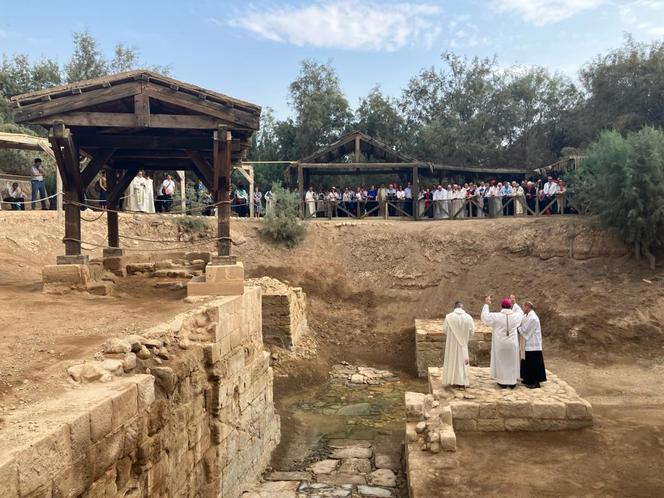

For the first time in its 85-year history, the association of French Catholic pilgrimage leaders held its annual congress in Jordan. "Holding a congress in Jordan is a major event. It will enable us to develop the number of pilgrims coming to this country, in the footsteps of Abraham, our common father in the faith, of Moses, of the great prophets, of John the Baptist," said the auxiliary bishop of Bordeaux, Jean-Marie Le Vert, at the opening of the congress of the Association Nationale des Directeurs Diocésains de Pèlerinages (ANDDP), held from November 13 to 18.
It is only the third time the event has been held outside Europe, after Lebanon in 2005 and Israel and Palestine in 2011. The ANDDP responded to an invitation issued three years ago by King Abdullah II, whose government intends, despite an explosive regional context, to make Jordan a prized pilgrimage destination for Christians.
The Hashemite kingdom, where Sunni Islam is the religion of the state and of over 90% of the population, claims to have numerous sites attesting to the country's long Christian history, and even several places with biblical references – starting with the presumed site of the baptism of Jesus by John the Baptist.

Located not far from the northern shore of the Dead Sea, the site has been a UNESCO World Heritage Site since 2015. "This is an extremely important place for us. It represents the place where Jesus began his public life and where, for the first time, the Holy Trinity manifested itself," said Giovanni Pietro Dal Toso, apostolic nuncio to Jordan – the equivalent of Vatican ambassador. In the Gospels, during the baptism of Jesus, a voice interpreted as that of the "Father" refers to Jesus as his "Son" and sends down upon him "the Holy Spirit."
Accessible to tourists on condition that they are accompanied by a guide and do not stray from the route set by the authorities – the border with Israel and the West Bank is only 300 meters away – the site gives visitors the chance to see, after a short walk in the shade of willows and tamaris, a stone staircase leading down into a small pond, the last aquatic vestige of what was, 2,000 years ago, a vigorous tributary of the Jordan (in a region hit today by a worsening drought).

The spot competes with another on the opposite bank, developed by the Israeli government. But many Christians – including the Catholic Church – see in the Jordanian site the "Bethany beyond the Jordan, where John was baptizing," mentioned in the Gospels (John 1:28). Although its authenticity is not recognized by historians – nor is any other location – the site is mentioned as early as the fourth century in the accounts of the Pilgrim of Bordeaux, an anonymous traveler who traversed the region around the year 333. Excavations begun in 1994 also show that it was an important site for Byzantine Christians (fourth-eighth centuries), who built churches and baptisteries here.
You have 75% of this article left to read. The rest is for subscribers only.
